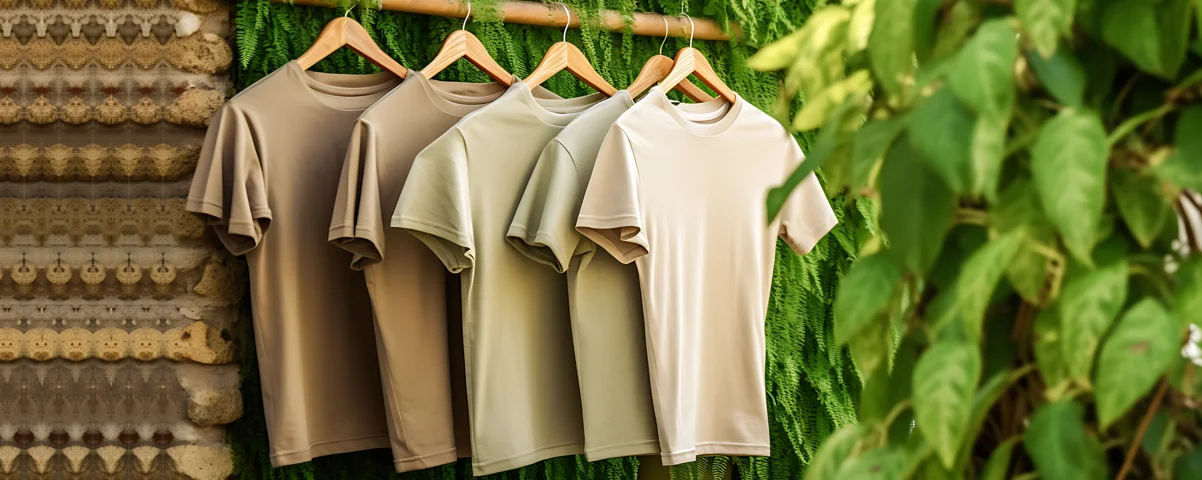What is sustainable fashion? Why fashion brands need to be sustainable
-
Introduction
Fashion brands are everywhere we look: from billboards on the street to advertisements on TV and in magazines—and of course on our clothes! The $2.3 trillion fashion industry has a major impact on our lives, with brand names and logos becoming synonymous with the products themselves.
But how does this affect us? How does this affect our planet? When you think about it, fashion is the business of making money by selling trendy clothes that people want to buy. However, the way these companies operate can have a huge impact on both the environment AND society itself. Reports peg the fashion industry’s CO2 emissions to be about 8-10% of all greenhouse gas emissions from human activities. You might have even heard that fashion’s energy consumption is higher than that of aviation and shipping industries combined!
These alarming numbers are the reason why there’s been an increasing pressure on fashion business to practice sustainability across the value chain. But what is sustainability? Sustainability is about people, planet, profit and purpose – it means considering how your business or brand impacts people (ethical design), natural resources (environmental impact) and society (societal value).
While this general definition might give you an idea of what sustainability means, the concept of sustainable fashion deals with a very specific set of problems and implications. In this blog, we’ll take a look at different aspects of the sustainable fashion industry as well as the role of customers in shaping the future of sustainable fashion.
-
What is sustainable fashion?
Sustainable fashion is a movement of promoting and implementing change in how fashion is designed, produced, marketed and consumed by choosing practices that support positive environmental and social impact across the entire system of fashion. This can be achieved by:
- Designing out waste through a circular economy model
- Promoting more ethical production practices
- Creating transparency so that customers know what they are buying
- Producing high quality products that can be used for a long time
- Using inclusive imagery and marketing practices to promote products
This holistic approach means looking at all aspects of production—from raw materials to manufacturing processes—to ensure that they benefit workers and local communities as well as keep consumers happy with quality products that don’t wither after a couple of washes.
-
Why does fashion need to be more sustainable?
You might have heard that the fashion industry is the second largest polluter in the world. The average person buys about 60 kg of clothing each year, and this consumption has devastating impacts on our planet. These facts, pulled from data by UNEP and the Ellen MacArthur Foundation, will help you estimate the damages:
- The average person today buys 60% more clothing than in 2000
- The average American throws away nearly 70 pounds of clothing every year
- 4% of global freshwater consumption goes to textile production (equal to the consumption needs of five million people)
- 20% of wastewater globally comes from fabric dyeing and treatment
- 87% of the fiber used in apparel products ends up in landfills or incinerators
- 10,000-15,000 liters of water are used to produce 1 kilogram of cotton
- $500 billion in value is lost annually due to clothing that’s barely worn, not donated, recycled, or thrown away
- 34.8% of microplastics found in oceans come from the textile and clothing industry
As you can tell, sustainability in fashion is not just a social responsibility issue. It is an economic one as well. A sustainable approach to production can help fashion brands reduce costs by reducing waste, energy usage, water use, and labor hours while increasing sustainability practices like recycling old materials or using renewable energy sources such as solar power.
Read more: The green route with PLM: Use technology to enable sustainable production
-
The future of sustainable fashion
As we move toward a greener future, technology will play a big part in sustainable fashion. For instance, new textile innovations enable us to create advanced eco-friendly materials and fabrics that are made from renewable resources. These materials can then be used for clothing and footwear that is more durable, as well as being less harmful to the environment.
The rise of 3D printing has already begun to revolutionize the industry, enabling designers and consumers to create new products and customize existing ones in ways that were never before possible. With 3D printing, designers could experiment with different materials without having to worry about limited manufacturing capacity or high costs.
The use of new technologies will also allow us to develop manufacturing processes that are more environmentally friendly by reducing waste and creating fewer carbon emissions. As an example of this, production software can help streamline supply chain and reduce waste while also keeping track of where each product is at any given time – ensuring that every item gets delivered on time without having it end up in a landfill somewhere along the way! It will help companies track their carbon footprints and identify areas for improvement.
Read more: 5 Sustainability Trends That Will Shape the Future of Fashion in 2022
-
Leading sustainable fashion brands
While there is a long way to go for the fashion industry, there are some brands who are leading the way in creating a sustainable fashion business. In particular ranking order, here’s a list of some of the most popular sustainability-forward fashion brands:
- Patagonia
- Everlane
- Cuyana
- Stella McCartney
- Girlfriend Collective
- RE/DONE
- Eileen Fisher
- Reformation
- People Tree
- Levi’s
-
How can you push fashion brands to be sustainable?
The fashion industry is often criticized for its business practices. As consumers, each one of us holds the power to move fashion into a more sustainable place and push brands to be greener and more ethical. Here are a few ways for you to push your favorite brands to get greener:
- You can write to your favorite brands and tell them that you want to see more sustainable products.
- If you love a specific brand but want them to become more sustainable, show them by buying from their sustainable or ethical lines! This can be hard if the items aren’t available in your country, but it’s always worth asking if they’ll ship overseas.
- Tell everyone else why it’s important! Share articles like this one with friends on social media so they know what’s going on too—it only takes one person’s voice for change!
-
Are there other ways to be more sustainable?
Apart from pushing brands and businesses, there are several other ways for us to adopt sustainability in our life. Here are some simple ideas to get started:
- You can reduce waste by reusing materials. This means that you can repurpose an old shirt or pair of pants into a new one, and make something that looks good out of something that was worn out and destined for the trash.
- Another option is recycling—you might find a use for fabric scraps (like those from cutting out patterns), or paper scraps (like those from cutting templates). These can then be turned into new items with minimal effort!
- Shop secondhand, or better yet, buy clothes from a thrift store or charity shop, which is the best way to ensure you’re not contributing to waste and pollution.
- Finally, purchasing fewer material goods will help reduce your carbon footprint by reducing energy used during transportation across oceans and continents. In addition, buying fewer clothes will keep you from having any clothes sitting around in storage waiting for their turn on display day.
-
Takeaway
We’ve already seen some major brands step up in recent years to make necessary changes in regards to domestic production, sourcing of material and other key environmental concerns. It’s a positive sign of progress, though not enough has been done to fully solve these problems just yet.
Maybe the future of sustainable fashion isn’t so bleak. We can make a difference, and we can hold fashion brands accountable. Hopefully, they’re taking notes…because we have a lot of work to do.








